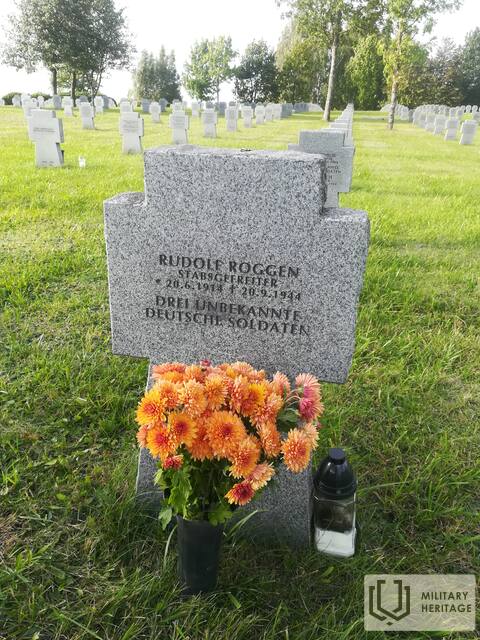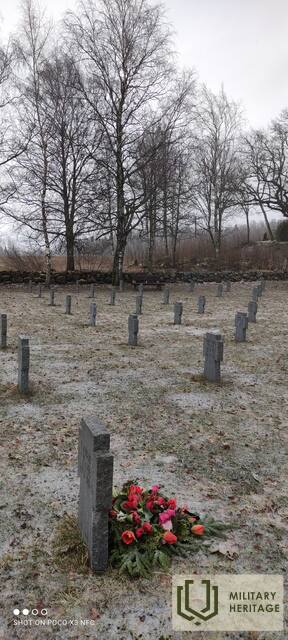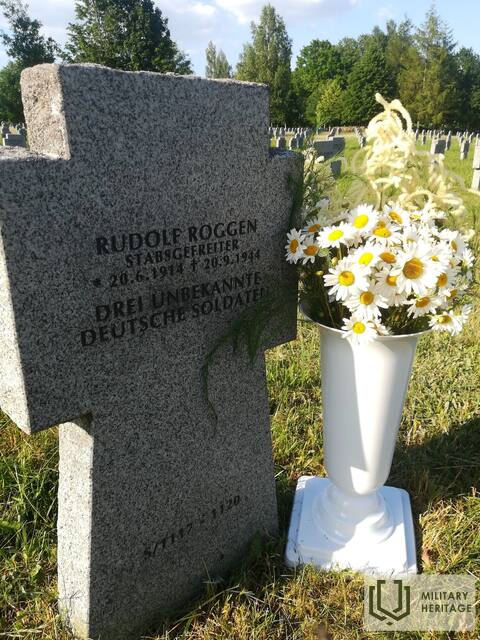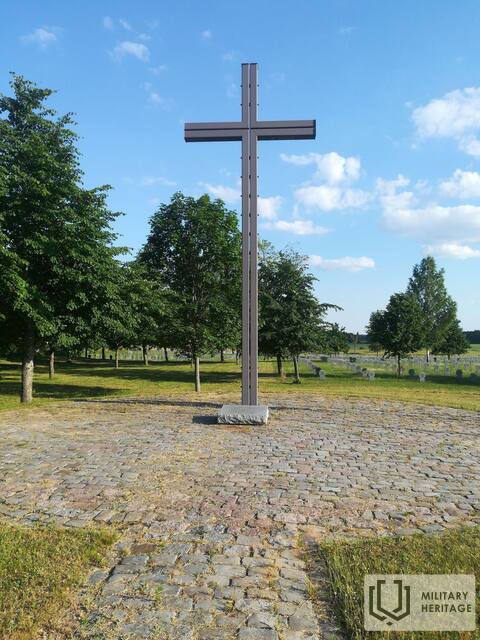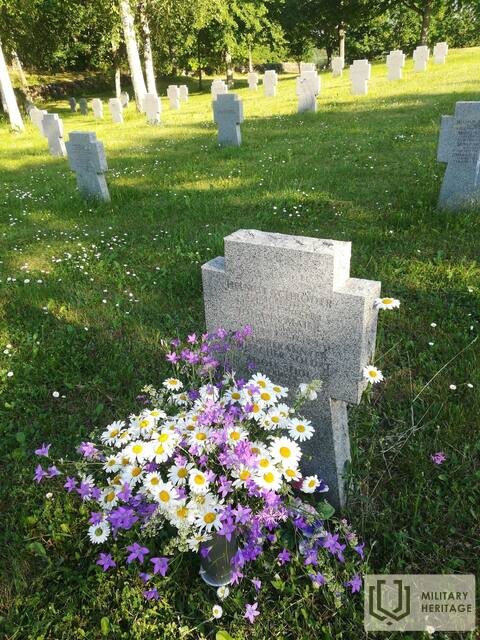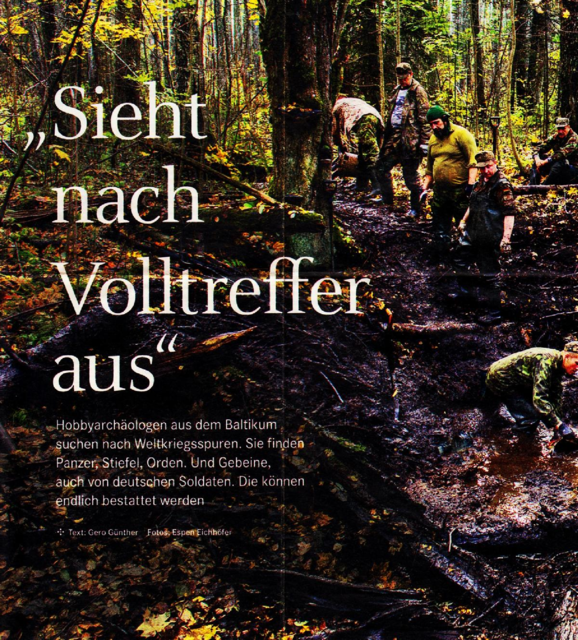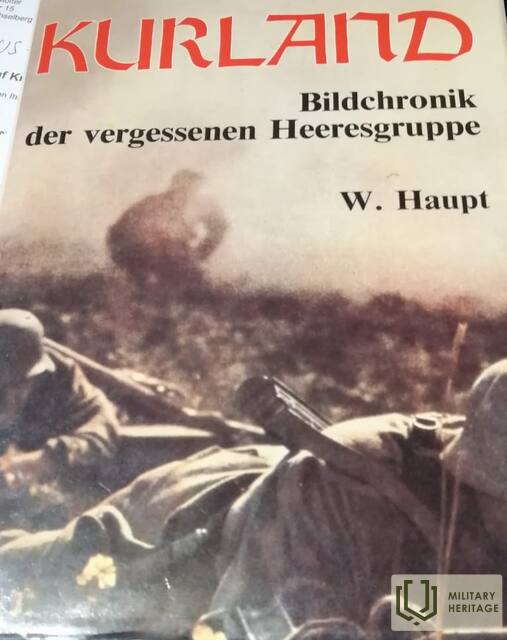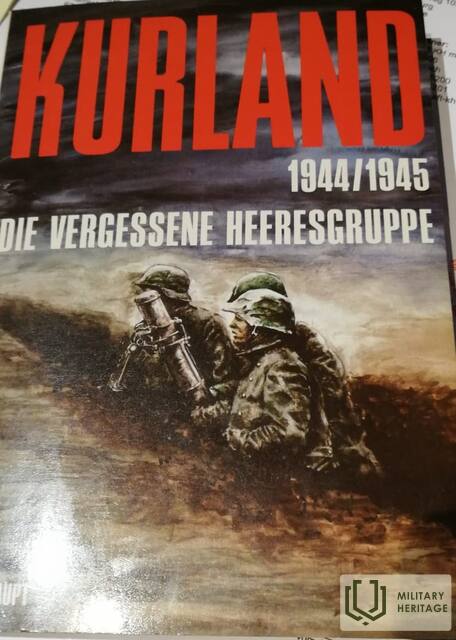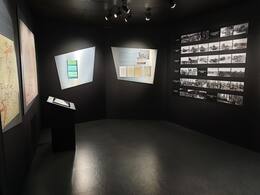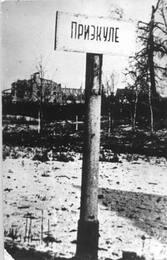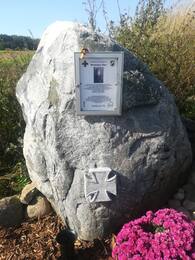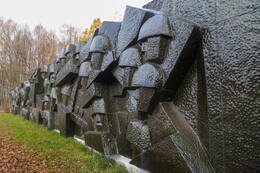"Der Krieg ist erst vorbei, wenn der letzte Soldat begraben ist" (Deutscher Soldatenfriedhof Saldus)
Kurzeme wurde am 10. Oktober 1944 zu einem separaten und eigenständigen Schlachtfeld. Etwa 500 000 deutsche Soldaten wurden als eingeschlossen gezählt. Nach den Berichten des Hauptquartiers der 1. Baltischen Front war nur eine "kleine Anstrengung" erforderlich, um die gesamte Ostseeküste vollständig zu befreien. Die Kämpfe in Kurland dauerten jedoch noch sieben Monate an, und Kurland wurde zu einem Symbol für das Ende des Zweiten Weltkriegs.
Während der siebenmonatigen Kämpfe bis Mai 1945 verloren die deutschen Streitkräfte in Kurland 154 108 gefallene, verwundete und vermisste Soldaten. Seit 1997 werden die Soldatenfriedhöfe in der Nähe von Saldus gesichtet und umgebettet. Derzeit sind hier 27 000 Namen gefallener Soldaten zu finden.
Kurzeme wurde am 10. Oktober 1944 zu einem separaten und eigenständigen Schlachtfeld. Die Rote Armee hatte seit Ende Juli 1944 versucht, den Erfolg in Weißrussland zu nutzen, wo die deutsche Heeresgruppe Mitte in weniger als einem Monat vernichtet wurde. Anfang August 1944 eroberten Einheiten des sowjetischen 3. Garde-Mechanisierten-Korps Tukums und erreichten Klapkalntsia am Golf von Riga, wodurch der Landverkehr zwischen der Heeresgruppe Nord der Wehrmacht und Deutschland unterbrochen wurde. Der erste Versuch der Roten Armee, den Verkehr zu unterbrechen, blieb jedoch erfolglos, da der deutsche Gegenangriff bereits Ende August 1944 zur Wiederherstellung des Landkorridors bei Tukums führte.
Der nächste Versuch, die deutsche Armee einzukesseln, begann am 14. September 1944, als die drei baltischen Fronten mit 1 546 000 Mann eine Offensive in Richtung Riga starteten. Auch dieser Versuch blieb erfolglos und die Rote Armee musste ihre Pläne ändern. Der dritte Versuch, die so genannte "Klaipėda-Offensive", war nicht nur erfolgreich, sondern wurde zu einer der größten Leistungen der Roten Armee während des Zweiten Weltkriegs. Die 5. Panzerarmee, die ihren Angriff am 5. Oktober begann, erreichte am Abend des 10. Oktober die Ostseeküste bei Palanga.
Schätzungsweise 500 000 deutsche Soldaten waren eingekesselt. Nach den Berichten des Hauptquartiers der 1. Baltischen Front war nur eine geringe Anstrengung erforderlich, um die gesamte Ostseeküste vollständig zu befreien. Die Kämpfe in Kurland dauerten jedoch noch sieben Monate an, und Kurland wurde zu einem Symbol für das Ende des Zweiten Weltkriegs.
Während der siebenmonatigen Kämpfe bis Mai 1945 verloren die deutschen Streitkräfte in Kurland 154 108 gefallene, verwundete und vermisste Soldaten. Die genaue Zahl der Gefallenen und Vermissten ist nicht bekannt, könnte aber bis zu 50 000 betragen haben. Nach dem Ende des Krieges wurden die Friedhöfe der deutschen Soldaten von den Sowjets zerstört. Die Exhumierung gefallener Soldaten von Schlachtfeldern und zerstörten Friedhöfen begann in den frühen 1990er Jahren.
Seit 1997 wurde mit der Erforschung und Umbettung von Kriegsgräbern in der Nähe von Saldus begonnen, wo derzeit 27 000 Namen gefallener Soldaten zu finden sind. Die Arbeiten sind noch nicht abgeschlossen, da noch nicht alle Gräber erforscht sind. Die Namen der umgebetteten Soldaten zeigen, dass neben Deutschen und Österreichern auch Letten, Esten, Litauer, Norweger, Dänen und andere Nationalitäten in die deutsche Armee eingezogen wurden.
Zugehörige Zeitleiste
Zugehörige Objekte
Deutscher Soldatenfriedhof Saldus
Der deutsche Soldatenfriedhof Saldus liegt an der Autobahn Saldus-Ezere. Auf dem 8 Hektar großen Friedhof wurden rund 25.000 deutsche Soldaten sowie einige lettische Legionäre umgebettet. Die Umbettung findet seit 1997 statt.
Vom 1. Mai bis 1. Oktober ist im Gedenkraum eine Ausstellung über die Schlacht von Kurland zu sehen. In diesem Zeitraum ist der Gedenkraum werktags von 9:00 bis 17:00 Uhr geöffnet, samstags und sonntags verfügt der Friedhof auch über einen Gästeführer. Die Register der in Saldus begrabenen Soldaten deutscher Soldaten und gefallener Soldaten in ganz Lettland sind ebenfalls verfügbar.
Zollhaus Ezere - Sammlung kulturhistorischer und heimatkundlicher Zeitzeugnisse
Das Zollhaus Ezere liegt unweit der Landstraße Saldus-Mažeikiai an der lettisch-litauischen Grenze. Am 8. Mai 1945 wurde in diesem Gebäude von den Befehlshabern der im Kurland-Kessel eingeschlossenen deutschen Heeresgruppe Kurland die Kapitulationsurkunde unterzeichnet. Daher kann man das Ende des Zweiten Weltkrieges in Ezere verorten. Die Ausstellung im alten Zollhaus informiert über die Ereignisse am Ende des Zweiten Weltkrieges sowie über die historische Entwicklung der Umgebung von Ezere von der Vor- und Frühgeschichte bis in unsere Tage. Am Morgen des 7. Mai 1945 stellte der Befehlshaber der Leningrader Front, Marschall L. Goworow, ein Ultimatum an die Befehlshaber der Heeresgruppe Kurland und forderte sie auf, die Waffen niederzulegen. Die Kapitulationsakte wurde am 8. Mai von beiden Seiten unterzeichnet und das weitere Vorgehen vereinbart: die Orte der Waffenübergabe, der Umfang der vorzulegenden Dokumente und Informationen sowie weitere Maßnahmen praktischer Natur.
Gedenkstätte für Hermann Faul
Es befindet sich an der Kreuzung von Landstraßen, die von der Straße von Pienava nach Džūkste abzweigt.
Denkmal für H. Faul und die neun deutschen und lettischen Soldaten, die in der Schlacht vom 27. Dezember 1944 gefallen sind (wahrscheinlich durch einen Volltreffer einer Kanonengranate) und seither als vermisst gelten, da keine sterblichen Überreste, Dokumente oder andere Hinweise auf ihre Identität gefunden wurden.
Gedenkstätte Bruderfriedhof-Soldatenfriedhof Priekule
Das Ensemble des Bruderfriedhofes Priekule an der Straße Liepāja-Priekule-Skuoda ist der größte sowjetische Soldatenfriedhof des Zweiten Weltkrieges im Baltikum. Hier wurden mehr als 23 000 sowjetische Gefallene beigesetzt. Die „Operation Priekule“ ab Oktober 1944 bis zum 21. Februar 1945 war eine der erbittertesten Kampfhandlungen in Kurland. Die für beide Seiten verlustreiche Schlacht von Priekule im Februar 1945 dauerte sieben Tage und Nächte ohne Unterbrechung. Bis zur Umwandlung der Kriegsgräberstätte in eine Gedenkstätte zierte den Bruderfriedhof Priekule das letzte vom herausragenden lettischen Bildhauers K. Zāle (1888-1942) geschaffene Denkmal, das ursprünglich zur Erinnerung an die Unabhängigkeitskämpfe in Aloja errichtet werden sollte. Zwischen 1974 und 1984 wurde der Bruderfriedhof Priekule auf einer Fläche von 8 ha zu einem Gedenkensemble für die Gefallenen des Zweiten Weltkriegs umgestaltet. Beteiligt waren die Bildhauerin P. Zaļkalne, die Architekten A. Zoldners und E. Salguss sowie der Dendrologe A. Lasis. Die 12 m hohe Skulptur der „Mutter Heimat“ steht im Zentrum der Gedenkstätte. Die Namen der Gefallenen sind in Granitplatten eingraviert. Bis zur Wiederherstellung der Unabhängigkeit Lettlands 1991 wurde der Tag des Sieges alljährlich am 9. Mai hier groß gefeiert.




